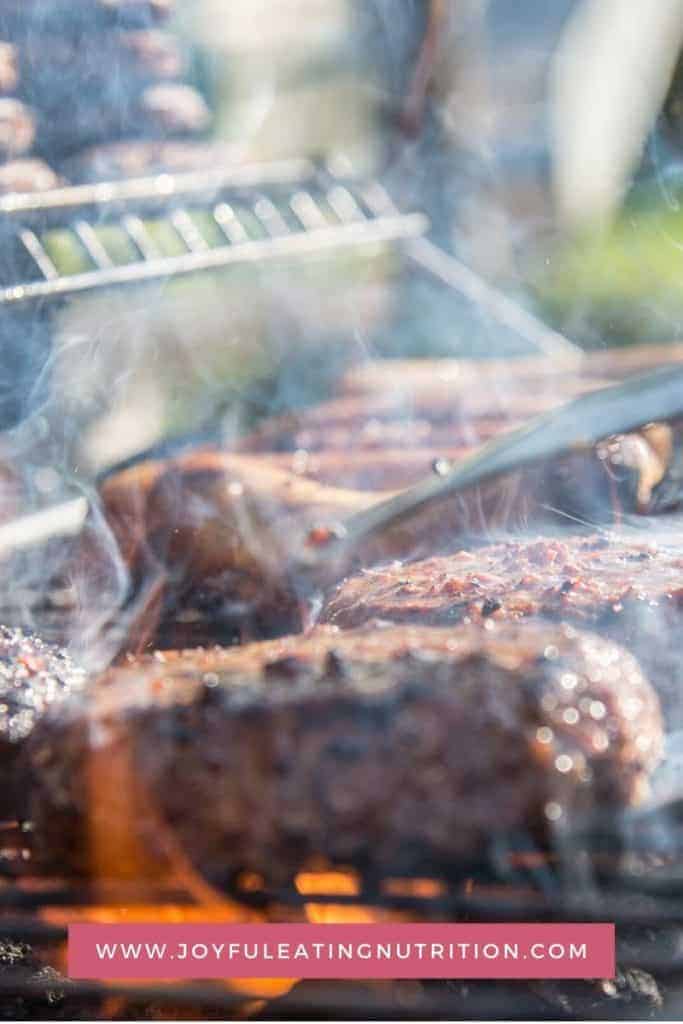Warning: This blog intends to express how gender norms influence food choice, not to portray gender as binary. Apologies for the gender stereotyping!
Although intended as a tongue-in-cheek idiom, Real Men Don’t Eat Quiche, the name of Bruce Feirstein’s book published in 1982, has stuck as a saying that draws a parallel between food intake and gender identity. The saying essentially means that quiche is not manly; real men eat meat. This takes us back to our prehistoric ancestors when men did the hunting and ate hunks of meat, while women supposedly gathered nuts, seeds, tubers and berries; aka feminine foods.
Although we have come thousands of years from our caveman days, the link between gender identity and food remains in the Stone Age. Today, vegetarian and vegan diets challenge men’s masculinity. Research has demonstrated that modern men tend to subconsciously forgo their taste preferences to conform to the masculine gender identity, choosing to eat foods that are seen to typify virility and strength.
This conformity has been demonstrated to impact men’s health as they are more likely to eat what is perceived as manly than what feels good to their bodies. Gender conformity can displace men’s ability to eat intuitively and choose healthier foods that are often considered feminine.
Now, this doesn’t mean that women have it better. Although women are less influenced by gender norms than men with regard to food, they are more so influenced by social standards of what it means to be a woman.
Women are influenced by diet culture and social pressures with regards to eating and their bodies more than men are.
Foods marketed to women (that men mostly avoid) often relate to being petite and ladylike. Words used to market to women—trim, lite, virgin, pure, luscious, delicate and delight—indicate that it is unladylike to dig into a hearty stew or gulp down your favourite drink. The words that are essentially celebrated by men—robust, heavy, chunky, meaty and beefy—are considered shameful for women.
Men are practically congratulated on their healthy appetites, while women are mortified. Men almost treat eating as a sport, competing for how much they can eat. Women, on the other hand, are supposed to control their portions and not appear too gluttonous. The female stereotype praises refinement, small portions and dainty eating; definitely not slurping or burping to express your gratitude or enjoyment of a meal enjoyed.
Categorising food by gender stereotypes is unhealthy for both men and women.
It seems to me that categorising food by gender stereotypes is unhealthy for both men and women; that without this conformity, women would be less afraid to enjoy food and men would be more receptive to embracing a wider variety of foods, such as vegetables. This would enable men to recognise that eating a salad won’t threaten their manliness (when it may actually enhance their virility). And that a woman can sink her teeth into a burger, as she too needs protein and iron to sustain energy.
I believe without gender stereotyping all people would be in a better position to eat in a way that they enjoy, that feels good for them, and that creates nutritional balance. This would require breaking down our gender stereotypes at a societal level. However, noticing this and then choosing to ignore it by listening to your own body and eating intuitively is a great place to start.
References:
- Thomas M.A. Are vegans the same as vegetarians? The effect of diet on perceptions of masculinity. Appetite, 2016. 97: 79-86.
- Gal D., Wilkie J. Real Men Don’t Eat Quiche: Regulation of Gender-Expressive Choices by Men. Social Psychological and Personality Science. 2010. 1(4): 291-301.
- Grogan S.C., Bell R., Conner M. Eating sweet snacks: gender differences in attitudes and behaviour. Appetite, 1997. 28(1): 19-31.

